This essay is from May 2019, when I was working on a Cannabis farm in Northern California. It’s one of my all time favorite posts. Enjoy!
I woke the other morning to the staccato sound of a Woodpecker pecking. He (I am guessing, based on appearance) was tap-tap-tapping on a dead branch on a nearby Oak. The rhythmic noise was not disturbing, even first thing upon waking, because I had been observing and appreciating this bird and his habits for the last few days on this particular tree. But the vibration also brought me sadness, as I knew the tree was not much longer for the world, and was in fact scheduled to be cut down that very day. Why? Such is agriculture. Read on…
* * *
I recently started work on a farm in northern California and the first task given to me was to clean up the property’s hoophouses. Inside these structures were hundreds of 10-gallon pots overflowing with vegetation of the sorts usually characterized as “weeds.”
“Weed” is an entirely subjective label of course. It’s not a scientific or botanical term. A “weed” species might be native or non-native in origin. A “weed” might also be edible, medicinal or have other beneficial qualities. In the broadest sense, a “weed” is simply “a plant out of place.” Obviously, it makes a big difference who is making that call. In this instance, weeds were any and all plants growing in the pots, without exception, so they would be open for the crop. At the risk of clouding the issue further, I’ll mention that a common name for the upcoming crop is “weed,” LOL.
Quite a variety of exuberant plant species were in attendance. Most common was Stinging Nettle (Urtica dioica), which seems to thrive in the mineral-rich but unbalanced soils left behind by Cannabis farming. I put on gloves for pulling these and, though I tried to be careful, still ended up getting my bare arms brushed by the leaves rather often, and suffered burny-scratchy skin all day. (It was too hot for long sleeves.)
There was also Chickweed (Stellaria media), Miner’s Lettuce (Claytonia sp.), Bittercress (Cardamine sp.), Wild Lettuce (Lactuca sp.), and Cleavers, aka Bedstraw (Galium aparine), all of which are edible and/or medicinal. Vetch (Vicia sp.) and Clover (Trifolium sp.) were prevalent and both fix nitrogren from the air, enriching the soil where they take root. Succulent thistles were budding and flowering (Sonchus and Cirsium), glossy grasses bunching (probably Holcus lanatus), and Pineappleweeds (Matricaria discoidea) popping up. I found just a few Queen Anne’s Lace plants (Daucus carota), the wild progenitor of the domesticated Carrot, whose seeds contain a natural birth control agent.
And of course, no collection of springtime weeds would be complete without the much maligned and misunderstood Dandelion (Taraxacum officinale), whose roots make medicine, its leaves cooking greens, its flowers wine, and its seedheads delightful wish-carriers. Originally brought to the Americas intentionally by Europeans who valued its many uses, its reputation as a villain is a very recent curse, perpetrated by the lawn industry for profit. Despicable. I found only three specimens and I ate two of them whole.
All of these plants are “pioneer species.” That is, they are the first to move into recently disturbed areas and fill the empty space. Many are also “ephemeral,” meaning they are short-lived, and if left alone will be gone without visible trace by the middle of summer. But their seeds will be lying in wait in the top layer of soil, waiting for the right conditions to sprout. That might be Autumn after the first rains arrive and this year’s crops have come and gone. You can think of weeds as being Mother Nature’s first responders.
The enthusiasm of such plants is undeniable. They sprout thickly, grow quickly and flower fast. They throw their whole selves into reaching for the sun, attracting pollinators, and reproducing. They rush to their goals but with such perfection that their haste makes no waste. They express an irrepressible joie de vivre from first sprout to final seeding. Their maturity is a swift fulfillment and their decline rapid. A life lived so fully in the moment – with such unrestrained vivacity – is beyond the comprehension of most of us humans these days, at least here in the techno-industrial world.
I was not blind to any of this while I was yanking them out. I nibbled on some of the edibles, but limited my urges due to not being sure what the chemical treatment of the previous crop had been. I marveled at the star-like flowers of the Chickweed, was utterly charmed by the pink inflorescence of the Henbit Dead Nettle (Lamium amplexicaule), and was thrilled to find the first few blossoms of the Sow Thistle (Sonchus sp.), bright yellow and cheerful like little suns.
The “disturbed areas” so loved by weeds are what agriculture constantly creates and recreates, often multiple times per annum. The non-human world is regularly marked by disturbances too, of course – floods, fires and landslides – and that’s how pioneer plants came to be. But agriculture as disturbance has its own qualities, not the least of which are its effects on us.
The landscapes of farms are dominated by annual plants, both the crops and the weeds. Yes, there are also perennials such as orchard trees, berry bushes, etc., but their settings are kept carefully (and usually chemically) tamed. As policy and practice, agricultural lands are purposely held back at juvenile stages and never allowed to mature. So, the interrelationships between plants and animals (and fungi and minerals and etc.) in such zones are limited to those of immediate post-disturbance. Those things that only happen a decade after the flood or fifty years after the fire never come to be. In this way, farming is a continual and insistent habitat destruction and so is responsible for the steep decline in the populations of many species around the world, plant, animal and otherwise. And – I never see this asked – how does this affect us – physically, metaphysically or otherwise – to be dependent on this forced juvenilizaton? Has this been an aspect of our short-sighted behavior since the agricultural revolution began?
Before agriculture, humans also affected their environment, it’s true. Some Native Americans, for example, set fires to keep forests open or to encourage the growth of certain food plants. But lacking agriculture’s dominating spirit, it was far more of a partnership. I discuss these lifestyle differences and their ecological and cultural consequences in some detail in my book, The Failures of Farming and the Necessity of Wildtending, but for the scope of this essay, suffice it to say that the transition from the digging stick and spear to the plow and silo was jarring, far-reaching and quite damaging.
That so many humans (and nearly 100% of farmers) who, upon witnessing the exultant life of pioneer plants, instantly get the urge to eradicate them, speaks very clearly to the contemporary condition. Yeah, I get it: “we have to eat.” But that’s domestication speaking, not ecological wisdom. And it doesn’t apply anyway if the crop isn’t food being grown directly for humans, which is nearly half of all of crops.
Collectively, we are unaware of how our taming of so much of the planet’s surface for farming has a) thrown the global environment out of balance and b) reduced us humans to morose docility. When the “weeds” sprout in spring, we are witnessing the healing power of life, and in that cheerful effort, Mother Nature does not care whether the particular species themselves are native or non-native. She works with what she has, without judgement, with no care for our opinions or dogmas. (For a critique of “invasive plant” theory, see the free zine I co-authored, here.)
This won’t go on forever, of course. By which I mean farming and its disturbances. Eventually, in one way or another, we won’t be around to do it anymore, or we will have returned to earlier (and healthier) ways of living.
But in the meantime, here we are, and it is characteristic of this place that we feel trapped while we are in it. This is something we must keep in mind, in both good times and bad: that our society is intrinsically based on limitation and imprisonment. But he “weeds” are not so constrained, no, not at all. So yes, “we have to eat,” and in the current cultural context that entails pulling some weeds, but we should open our eyes (and our hearts) to the jubilant effervescence of these ephemeral creatures and reflect on how we can foster that spirit in ourselves, as individuals. That path might lead, it seems to me, to some kind of liberation.
* * *
Not all the “weeds” I found were happy annuals. I also ran across a good number of Douglas-Fir seedlings (Pseudotsuga menziesii) – with their cotyledons arranged in pinwheels – and germinating Oak (Quercus sp.) acorns, their hulls split by stocky white roots and sprouts. The hoophouses stood on ground once forested with these and other trees, including Madrone, and was still surrounded by them. Thinking of all the Pseudotsuga that had been cleared for the farm, I potted up the first seedling I found.
“A plant out of place.” That was, all of a sudden, the unfortunate position of the Oak. In order to expand plantable area on a property of limited size, this tree would be cut down, along with a couple of young Doug-Firs next to him [that’s my personal sense of the appropriate pronoun].
I spent a few minutes the day before the scheduled execution day taking pictures of him. Like most trees in these crowded, post-logged areas, he was “leggy;” that is, there were no branches on the lower part of his trunk and his whole appearance was a little spindly. The trunk itself was slightly twisted, bent as it rose, and was covered with thick, furrowed bark. A few dead branches, obvious by their lack of bark, provided homes for the insects the Woodpecker sought.
Leaf buds were just starting to open, high up, against the sky. Last year had been his last fully leafed season, as it turned out. I won’t make a guess at the exact age of the tree, but surely it was a century or so. Definitely older than the humans deciding its fate.
And yes, I hugged the tree. If you put your arms around a tree, press your body up against the trunk, close your eyes and stay there for long enough, you can definitely feel things. At least I have, and so have other people. Most people haven’t tried, including – I would wager – the majority of those who would express skepticism about the action and what it can teach. I won’t say anything about what I experienced. Such sensations exist mostly outside the realm of language, or at least contemporary English anyway. But the result was a stronger understanding of the tree and a deepened sadness about his impending loss.
They say you can learn a lot about a society by the way it treats its children and elders. That Oak was merely one of many old trees that will be killed this year to make way for human endeavor. And those weeds were only a handful of the uncountable number that will be pulled or poisoned. The damages incurred by all those deaths are virtually inestimable, but will be outweighed in the human mind by the monetary profits that can be counted.
It’s a calculus that makes me very, very sad. I wish it were different. And I don’t want to stop that sadness or wishing. They are part of what makes me feel alive in the clutches of this deadening society.





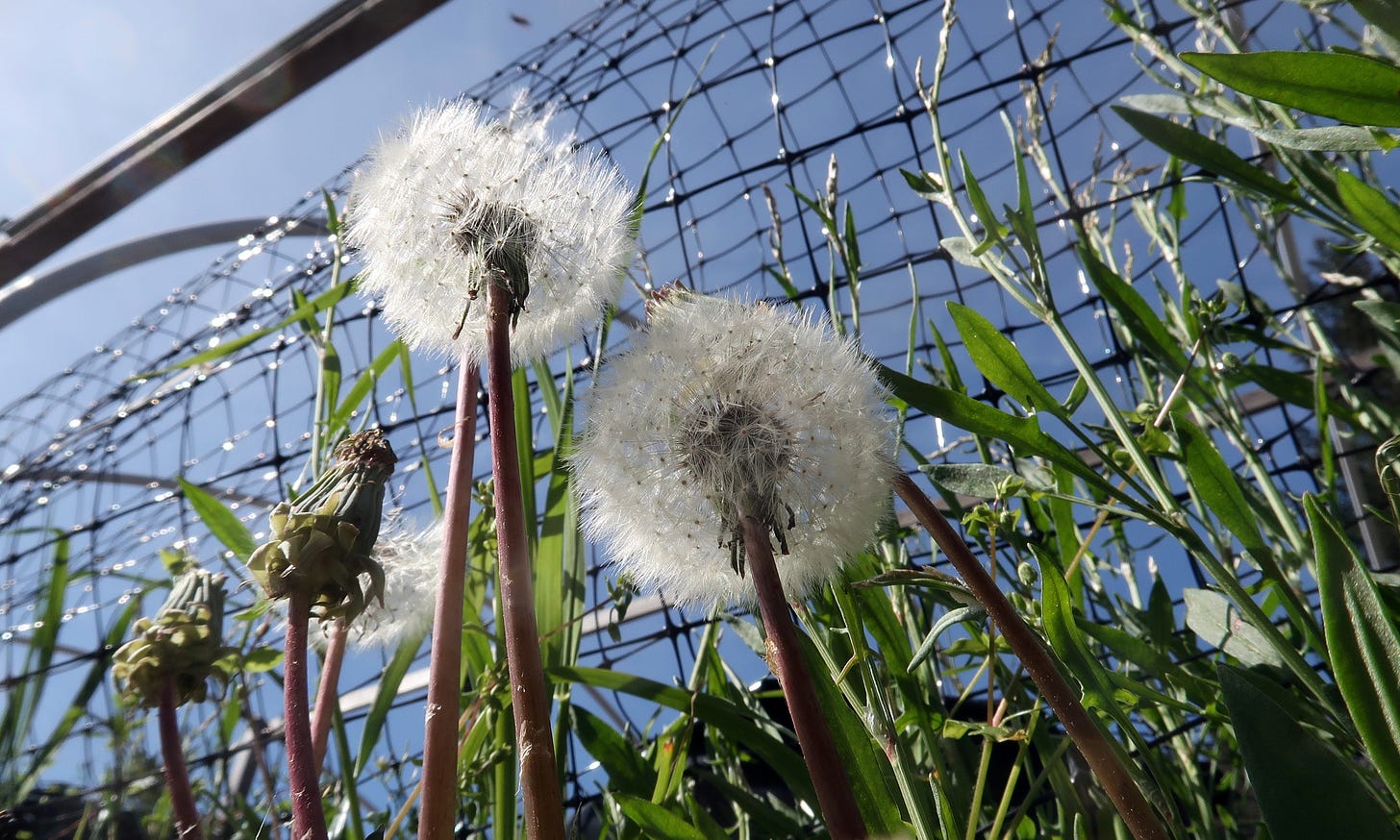
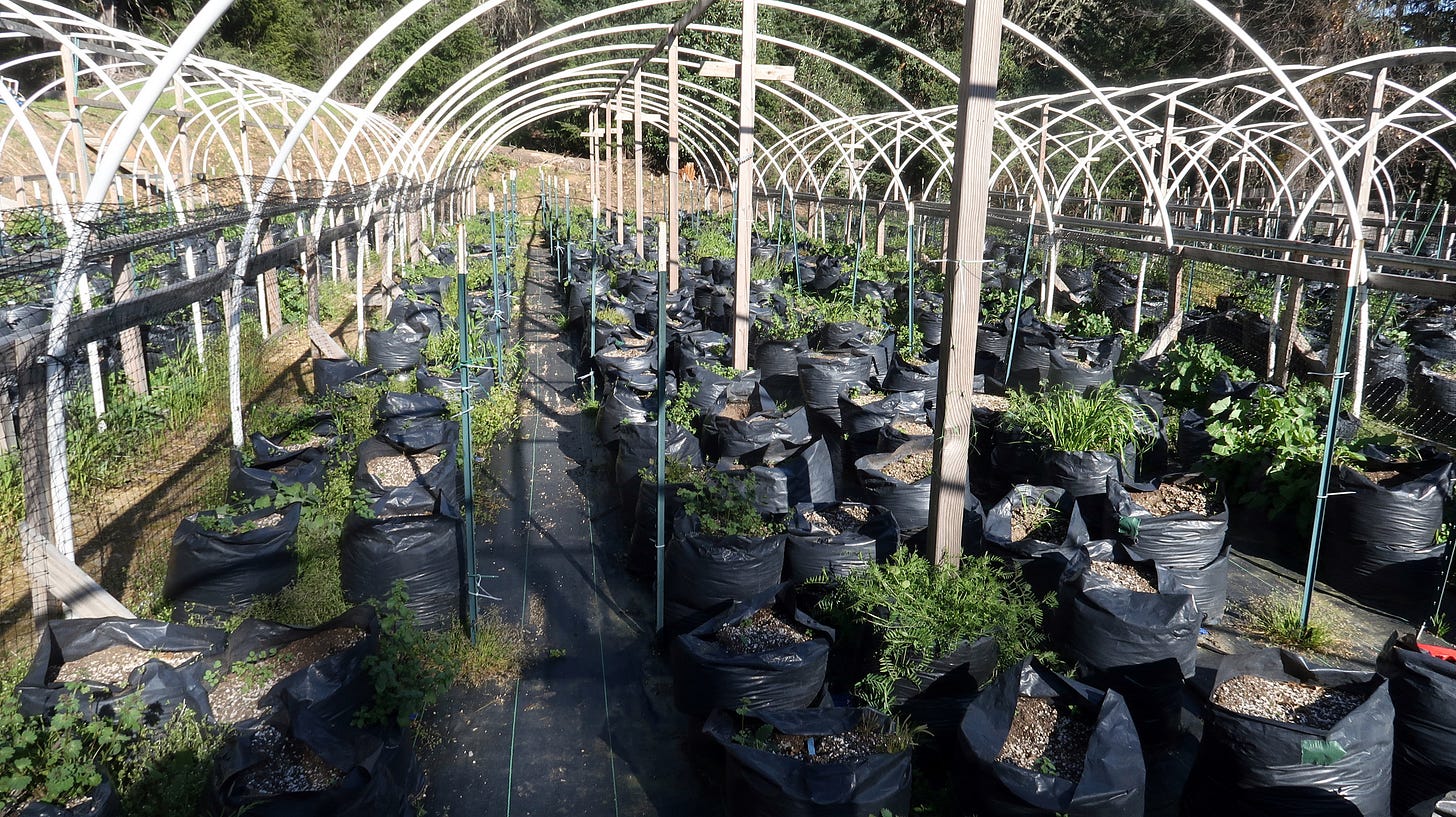
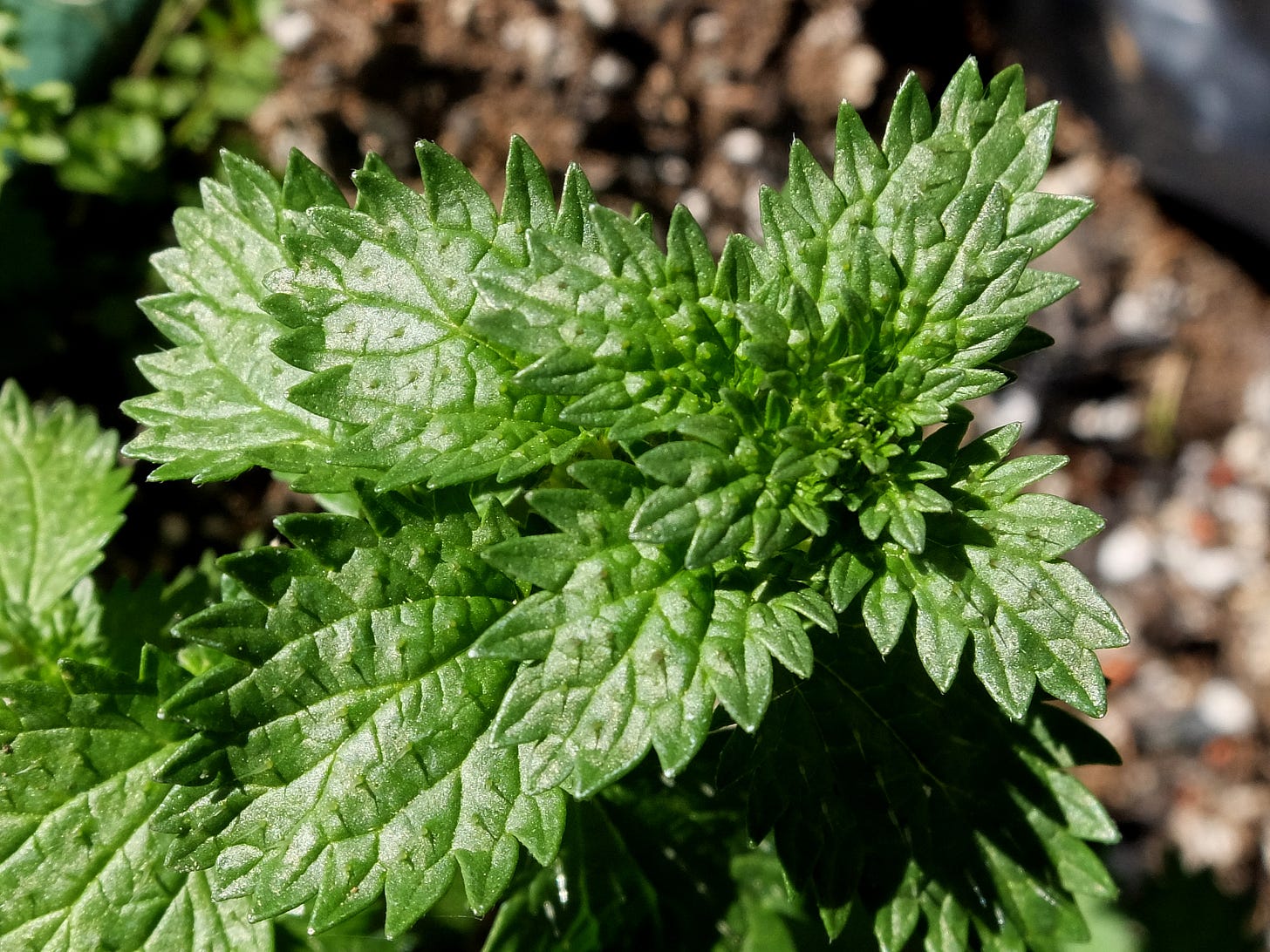
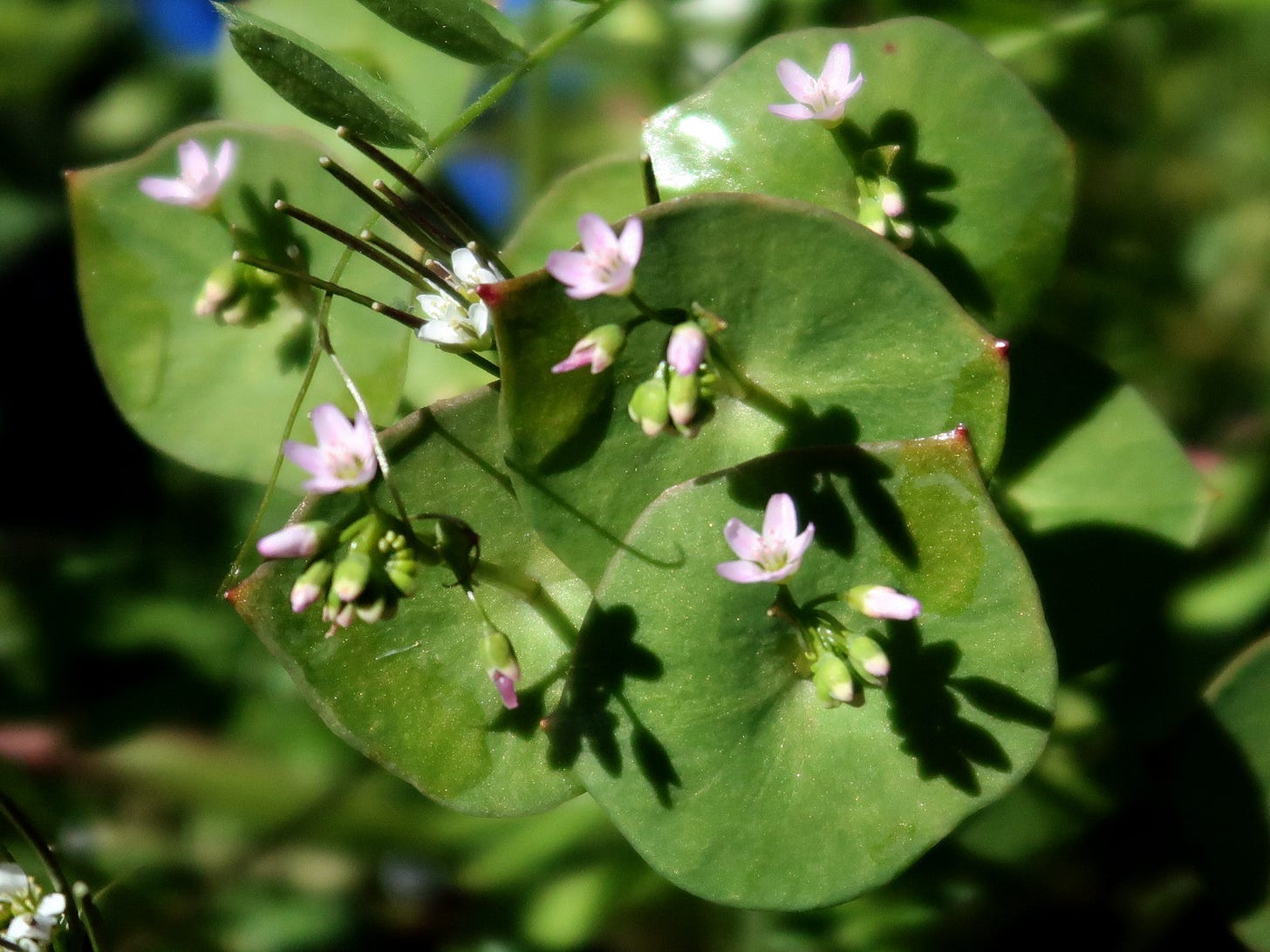
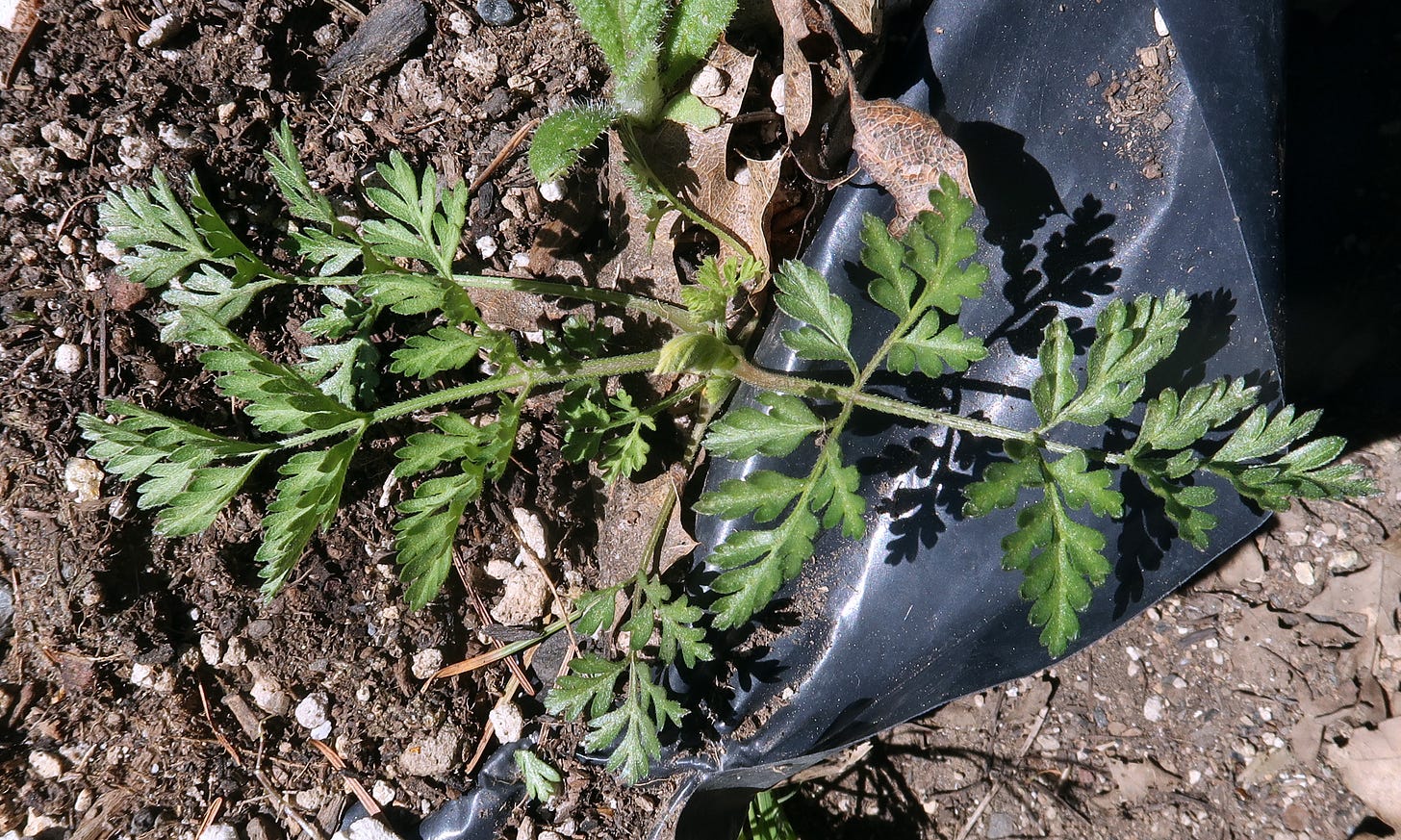
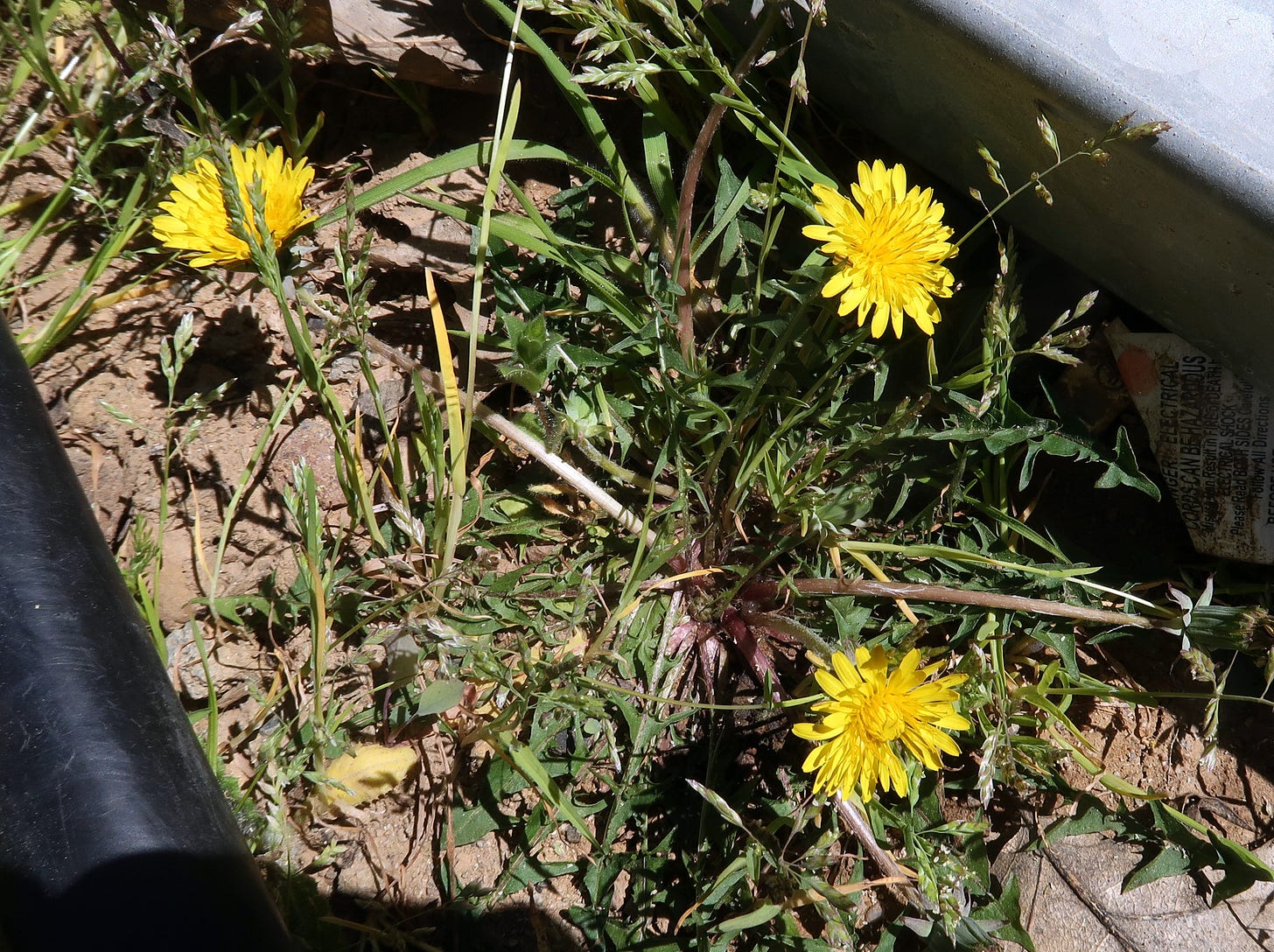
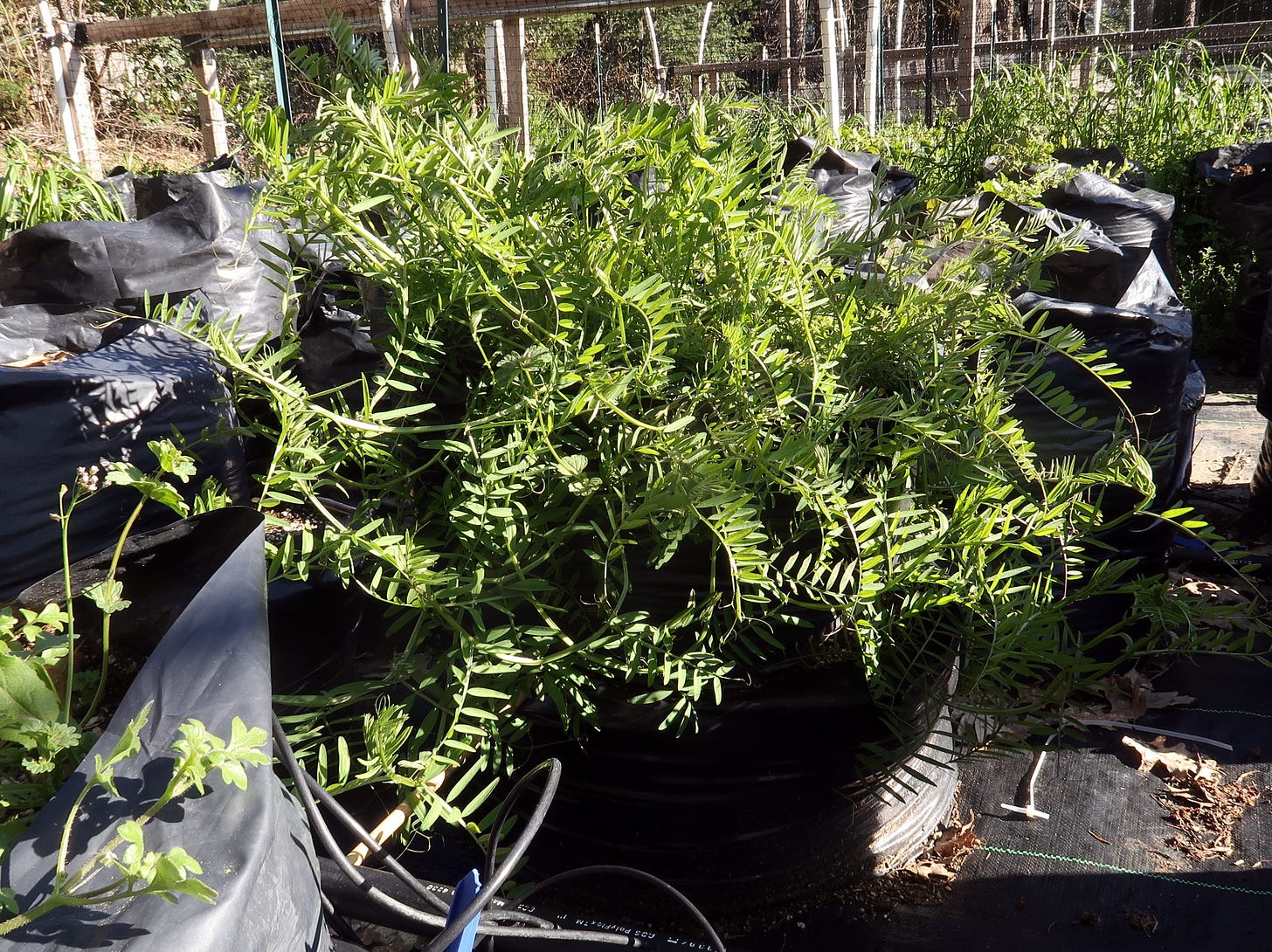
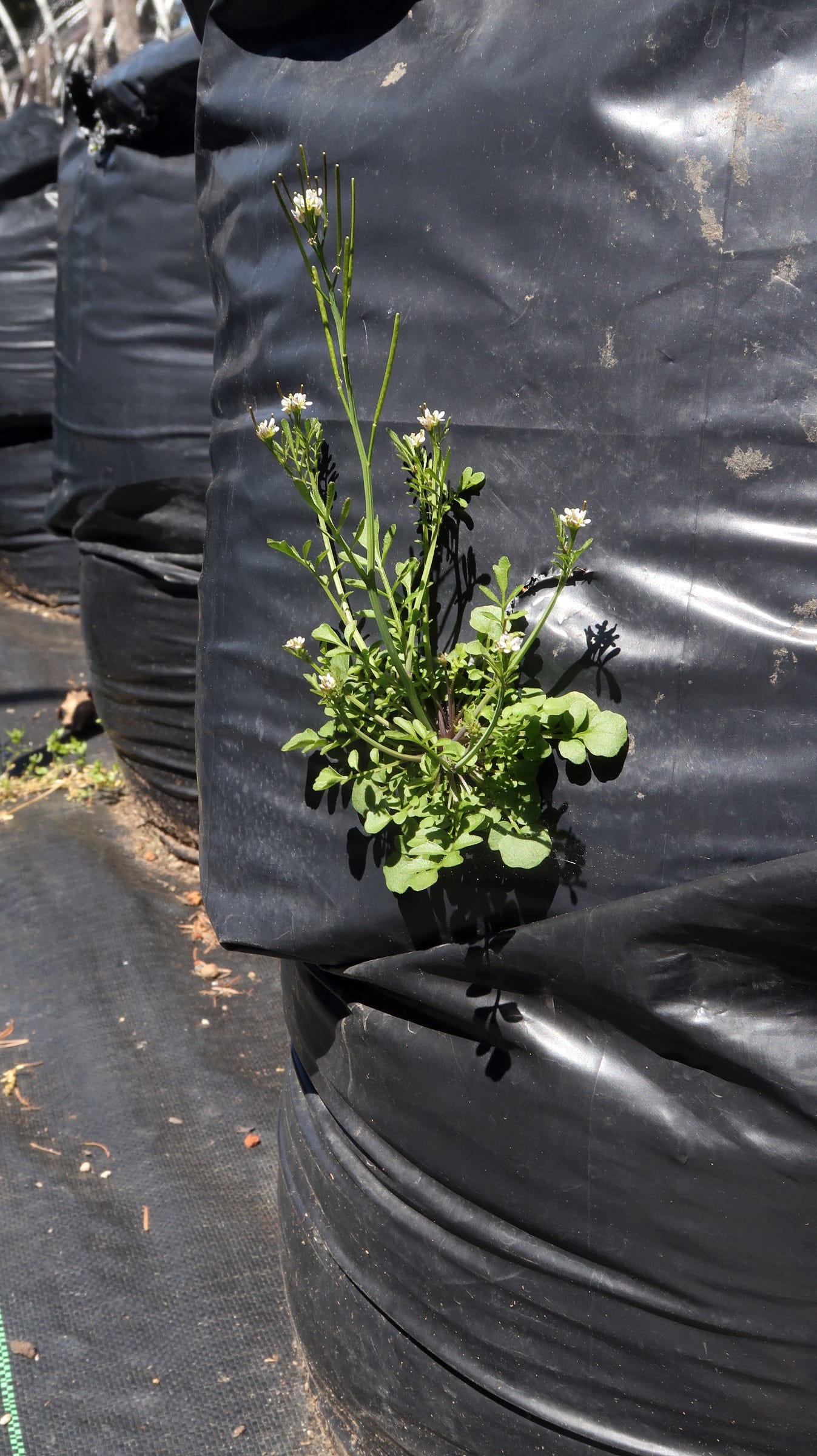

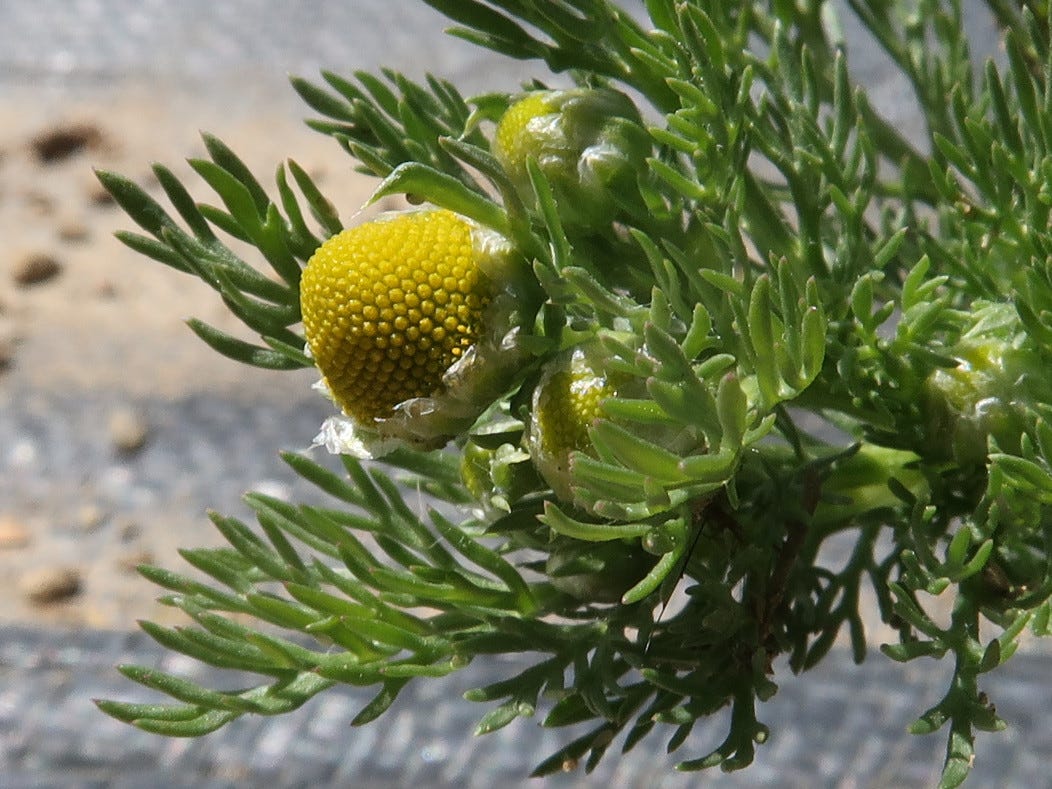
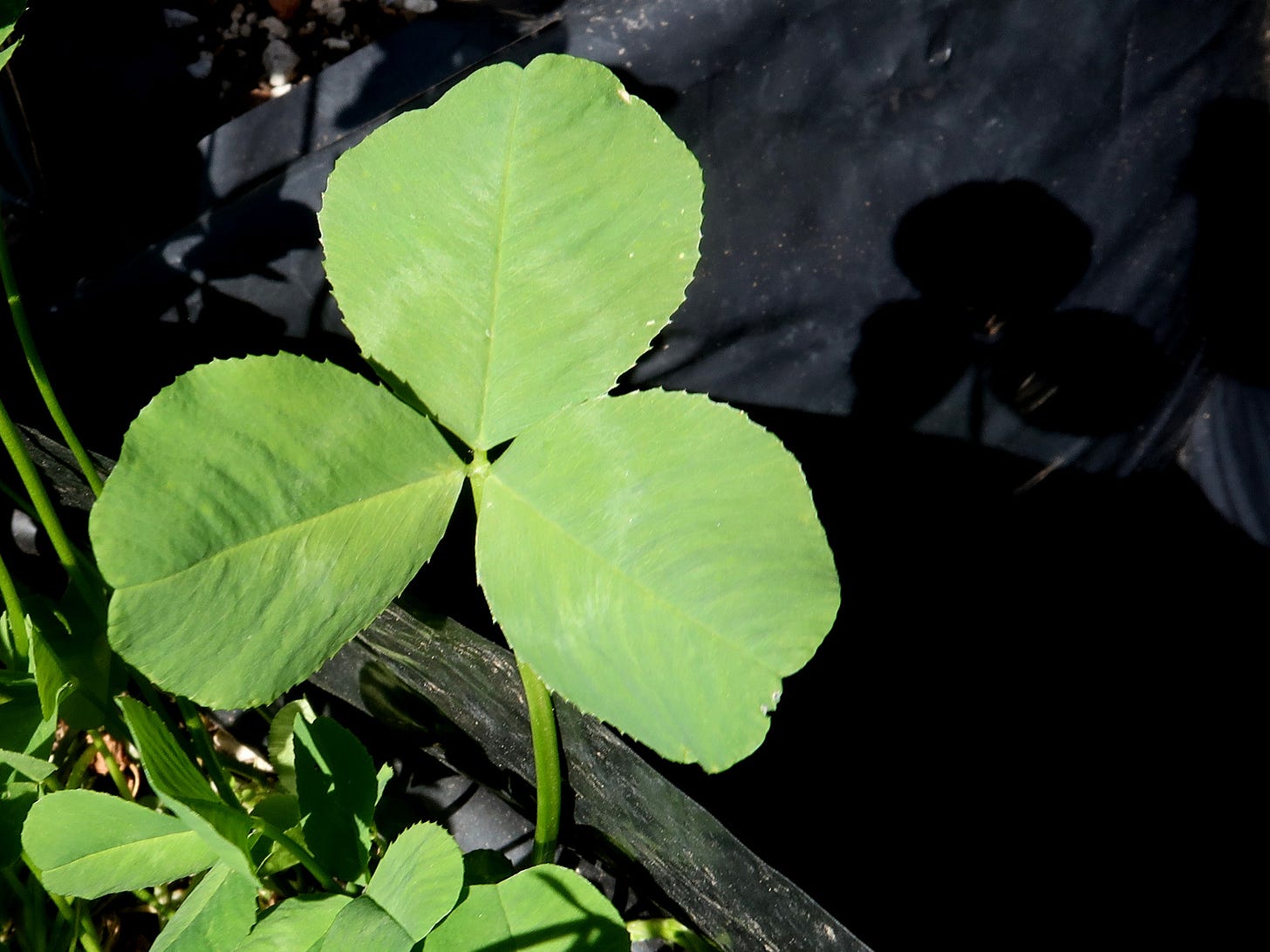


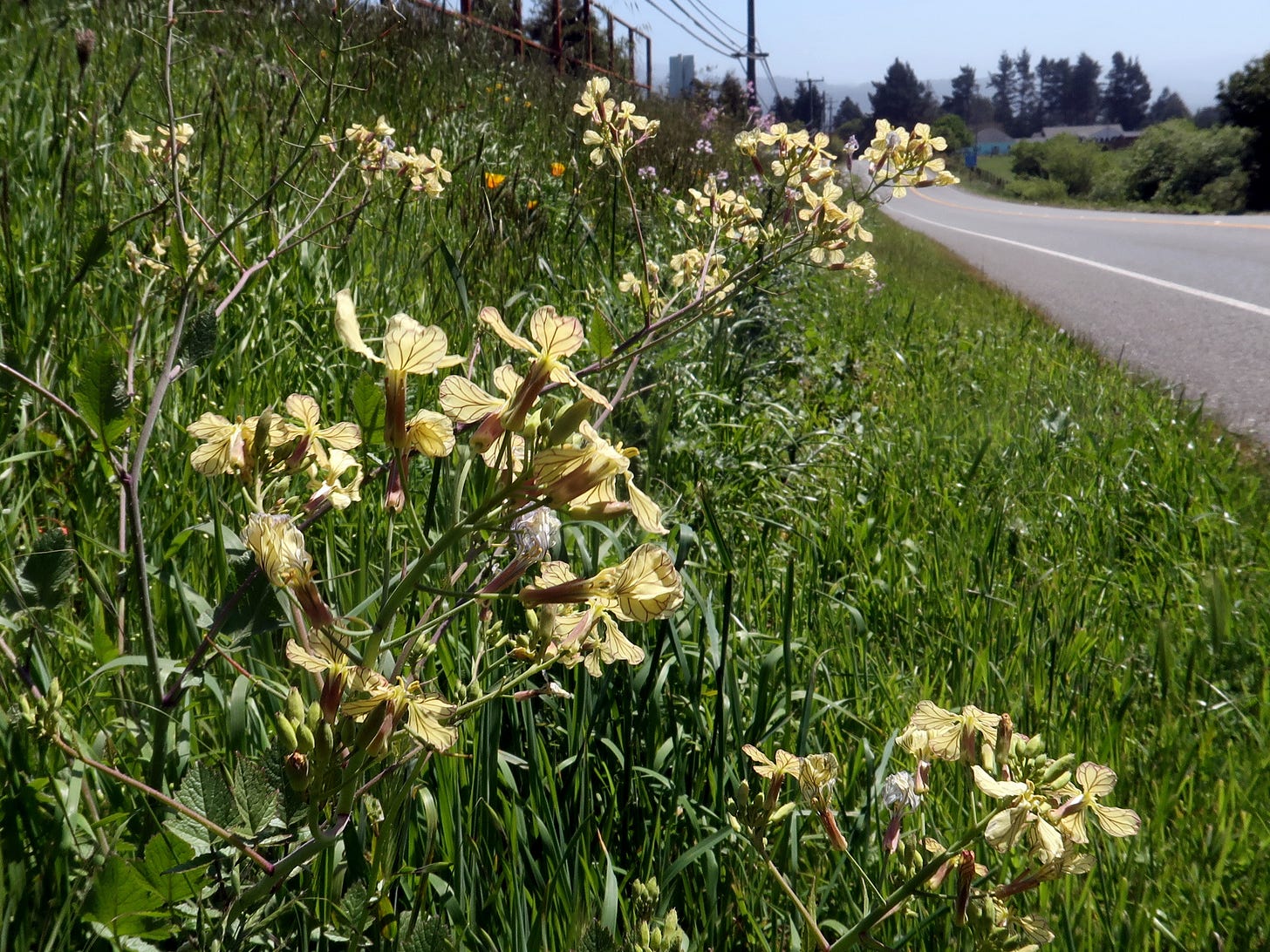




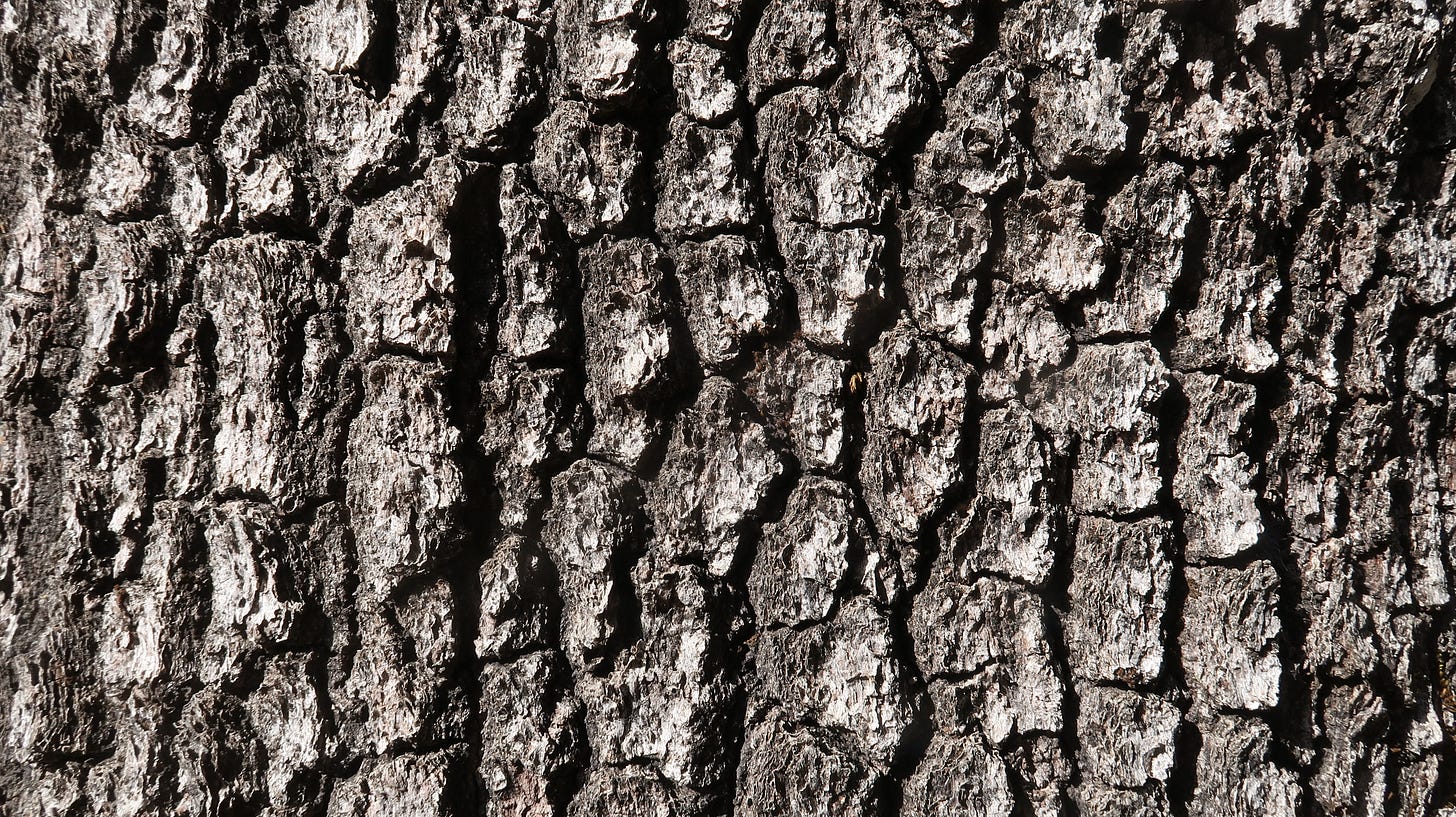
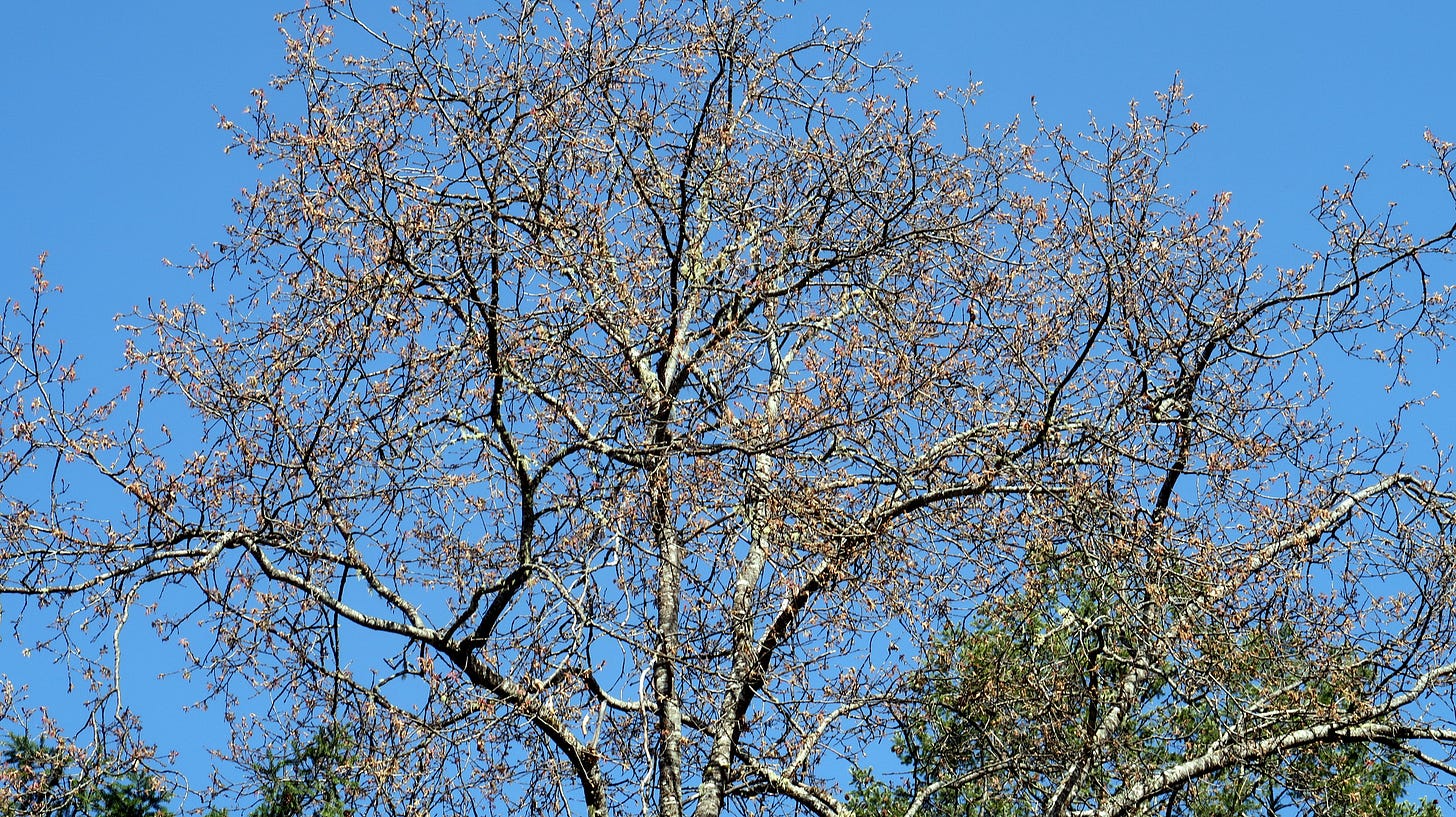
Thanks for this thoughtful essay on weeds! I’ve often thought about how they were just plants living in places people didn’t want them. I quoted a couple of your paragraphs in my Substack, Mother E, and riffed on that theme. It’s here if you want to read it:
https://mothere.substack.com/p/the-voices-of-earth-week
Thanks for your writing about the green world!